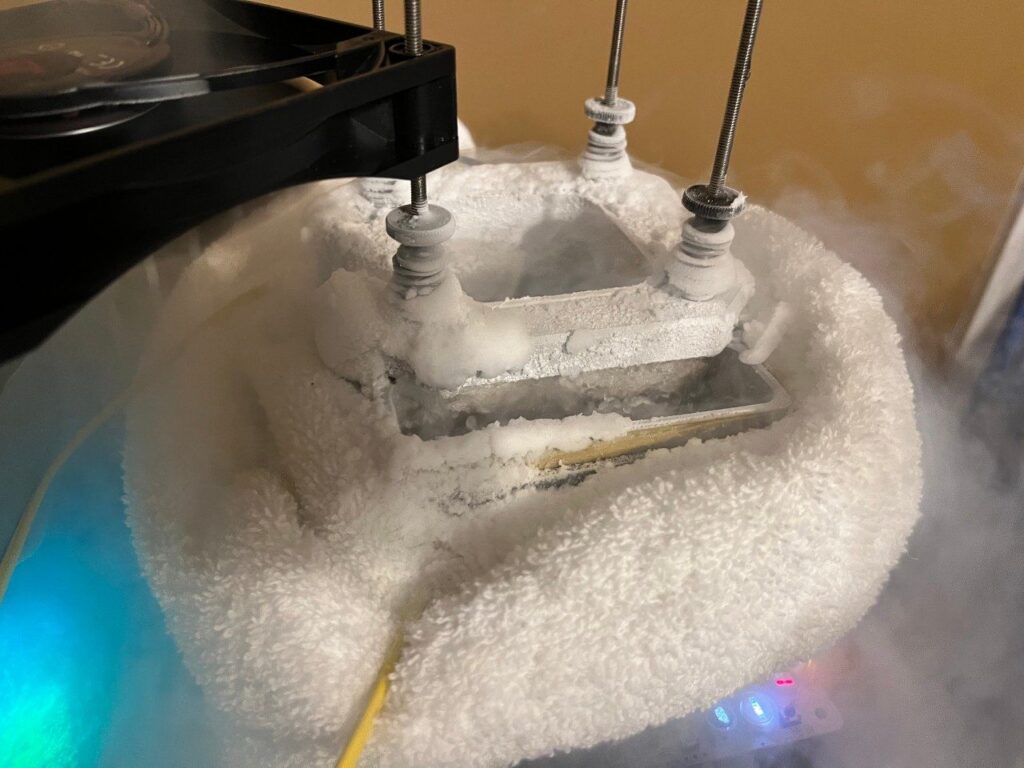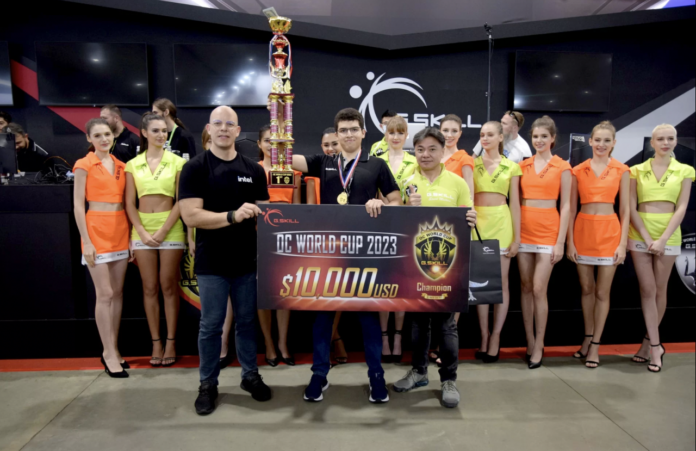More than 24 hours after taking off from Dulles International Airport, rising sophomore Sebastian Marrufo’s plane landed in unfamiliar territory: Taipei City, Taiwan.
Marrufo traveled nearly 8,000 miles for the G.Skill Overclocking World Cup 2023. After competing against nearly 75 hardware aficionados in an online qualifier and placing in the top five, the Virginia Tech College of Engineering student was invited to vie for the world championship title.
“At that moment, there was no time to be nervous,” said Marrufo. “I had already done everything I could to prepare. More than anything, I was excited to explore a new place and meet my competitors and the folks from one of the competition sponsors, Asus, who was so supportive throughout my journey.”
So what is overclocking exactly?
Overclocking is the act of speeding up a computer’s central processing unit (CPU) to a higher speed than it was designed to run. Increasing a component’s clock rate causes it to perform more operations per second, but it also produces additional heat.
Overclocking can help squeeze more performance out of a computer’s components, but it also requires additional cooling. Enter liquid nitrogen. Overclockers use liquid nitrogen to prevent the components from overheating with the goal of increasing the speed of the processors by more than their competitors.

In a practical application, overclocking can also help with the completion of computational tasks.
“As long as you’re able to cool the CPU, the advantage of overclocking is that you get more performance than you paid for,” said Marrufo. “If you increase the clock by 10 percent, that’s 10 percent more performance, and it could allow you to finish something like a rendering that much faster.”
Where it all began
Marrufo’s love for overclocking began as an eighth grader when he built his own computer.
“I’ve always loved messing around with computers,” said Marrufo. “Getting into overclocking was a natural next step for me. I saw tutorials online, gave it a try, and the rest is history.”
G.Skill, a Taiwanese computer hardware manufacturing company, announced its online qualifying competition at the beginning of 2023. When Marrufo found out about the event, he immediately began practicing. After months of getting his technique just right, the Blacksburg native went up against the world’s most skilled overclockers. At age 20, he was one of the youngest to qualify and compete in event history. Marrufo’s strategy focused on preventing the buildup of ice and condensation by using several printed circuit board heaters under his setup along with more insulation material such as thick towels.
His innovative efforts paid off when he placed fifth in the online qualifier, securing a spot at the in-person world championship along with eight others from around the globe. Just two months later, Marrufo found himself on stage in a different country competing for a $10,000 prize.

World records and world experiences
A week before leaving for the world cup finals, Marrufo broke the world record for overclocking in memory frequency.
“G.Skill was really happy with me because breaking that world record was something they could talk about at their booth during the competition,” Marrufo said. “And they definitely talked about it a lot.”
Much to everyone’s surprise, on the day of the final competition, an engineer from Gigabyte used GB memory to beat Marrufo’s world record score. G.Skill invited Marrufo to their offsite office in Taipei to try to beat the score again. And after two tries – he did.
“A press release was put out about how I got a world record at Computex, which was pretty cool,” said Marrufo. “It was really the icing on the cake to winning the whole competition.”
Marrufo’s performance sealed him the first-place win after finishing nearly 300mhz faster than the second-place scorer in the final two categories.
“This entire experience has made me really thankful,” he said. “All of the preparation and practicing I did to make sure everything performed as expected paid off. I was also able to make some really great connections with the people from G.Skill and ASUS, and meet a lot of new friends.”
After spending a couple of extra days in Taiwan and trying out some local cuisine from street vendors, the aspiring electrical engineering student went home with an experience to last a lifetime and $10,000 to boot.
“Other than paying for the cost of my trip this year, I don’t have any plans for the rest of the money,” said Marrufo. “I do know one thing for sure, I am planning to go back next year and see how my overclocking skills have improved even more.”
- Suzanne Miller

